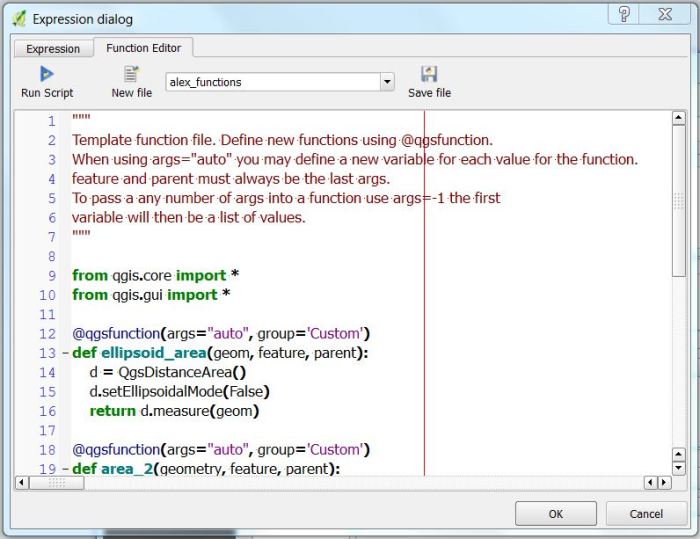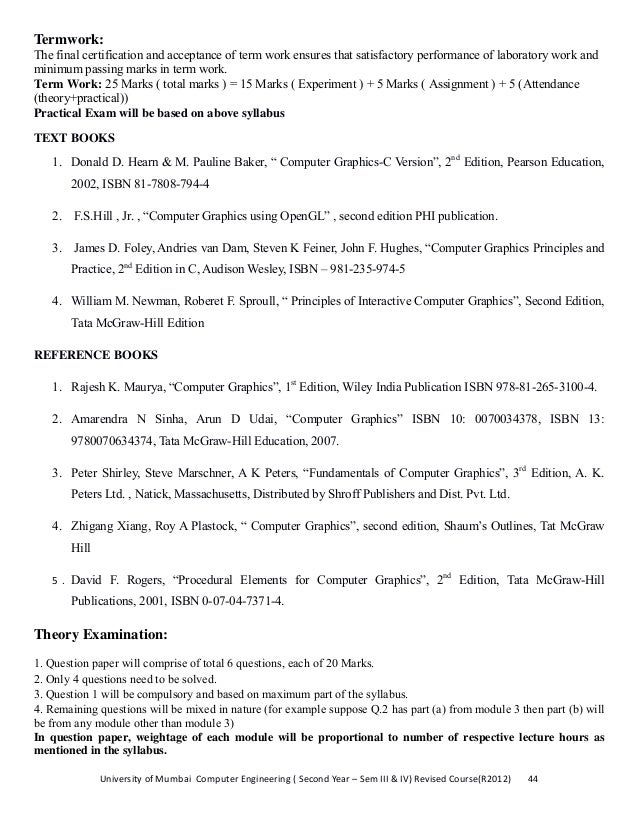Computer Graphics Using Opengl 2nd Edition Fs Hill
Computer Graphics Using OpenGL, 3rd Edition. Based on second edition user feedback and reviewer comments. Computer Graphics Using GL, 3rd Edition Hill.
Description For undergraduate Computer Graphics courses. Updated throughout for the latest developments and technologies, this text combines the principles and major techniques in computer graphics with state-of-the-art examples that relate to things students see everyday on the Internet and in computer-generated movies. Practical, accessible, and integrated in approach, it carefully presents each concept, explains the underlying mathematics, shows how to translate the math into program code, and displays the result. Text-specific Web site: – Easy for student to use and obtain source code from book. – Offers convenient access to many images, references and sample programs to support the discussion in the book.
– Vastly expanded to include all color images, source programs for all complete programs given in the text, and resources closely related to the book’s material. C as the underlying programming language –Introduces useful classes for graphics, but does not force a rigid object-oriented posture.
GL(R) Shading Language (2nd Edition)Open. GL(R) Shading Language (2nd Edition)Book Title: Open. GL(R) Shading Language (2nd Edition). With Randi's extensive. GL(R) Shading Language (2nd Edition)Open. GL(R) Shading Language (2nd Edition)Book Title: Open. GL(R) Shading Language (2nd Edition). With Randi's extensive.

Early, in-depth treatment of 3D graphics and the underlying mathematics – Enables students to produce realistic 3D graphics much earlier in a course. Students can write programs to “fly” a camera through a 3D scene. Extensive case studies at the end of each chapter. Clear flow of ideas from first principles to the techniques of graphics: – Develops the underlying mathematics from first principles. – Shows students where the math comes from, why it is used, and how it is applied, allowing them to grasp it much more quickly and apply it to their graphics work.
Clear presentation of the links between a concept, underlying mathematics, program coding, and the result – e.g., the use of vectors in graphics, the underlying theory of transformations, the mathematics of perspective projections, etc. An abundance of state-of-the-art worked examples. Numerous practice exercises (approx. 30 per chapter). Updated treatment of graphics hardware and algorithms. More emphasis on interactive graphics – Includes menu design and interaction, and the use of OpenGL to simplify real-time interactions such as flying a camera through a scene.
Discussion of the development of video games through history. Discussions on the graphics pipeline – Includes coverage of the latest versions OpenGL & the Shading Language and the benefits they provide. Reduced emphasis on PostScript, Hidden Surface Removal, Relative Drawing, and Fractals. These topics are still covered but have been moved to appendices. Full working source code provided for all significant examples, either in the book or on the book’s companion website. Significant improvements to organization, based on second edition user feedback and reviewer comments.
Larger number of problems than the previous edition. Case studies revised throughout – Increased in number and refined throughout; they correspond more closely to the topics in each chapter. Table of Contents CONTENTS Chapter 1 Introduction to Computer Graphics 1.1 What is Computer Graphics? 1.2 Where Computer Generated pictures are Used 1.3 Elements of Pictures created in Computer Graphics. 1.4 Graphics display devices 1.5 Graphics Input Primitives and Devices 1.6.
Chapter Summary & Exercises 1.7. For Further Reading. Chapter 2 Getting Started Drawing Figures 2.1 Getting started making pictures 2.2 Drawing Basic Graphics Primitives 2.3 Making Line-drawings 2.4 Simple interaction with mouse and keyboard 2.5. Case Studies 2.7. For Further Reading. Chapter 3 Additional Drawing Tools 3.1. Introduction 3.2.

World Windows and Viewports 3.3. Clipping Lines 3.4. Regular Polygons, Circles, and Arcs 3.5.
The Parametric Form of a Curve. Case Studies 3.8. For Further Reading. Chapter 4 Vector Tools for Graphics 4.1. Introduction 4.2. Review of Vectors 4.3.
The Dot Product. The Cross Product of Two Vectors.
Representations of Key Geometric Objects. Finding the Intersection of two Line Segments. Intersections of Lines with Planes, and Clipping. Polygon Intersection Problems. Case Studies 4.11. For Further Reading. Chapter 5 Transformations of Objects 5.1.
Introduction 5.2. Introduction to Transformations 5.3. 3D Affine Transformations 5.4. How To Change Coordinate Systems 5.5.
Affine Transformations used in a Program. To Draw 3D Scenes Interactively with OpenGL. Case Studies.
For Further Reading. Chapter 6 Modeling Shapes with Polygonal Meshes.
Introduction 6.2. Introduction to Solid Modeling with Polygonal Meshes. Extruded Shapes. Mesh Approximations to Smooth Objects. Particle Systems and Physically Based Systems 6.7. Case Studies.
For Further Reading. Chapter 7 Three-Dimensional Viewing 7.1 Introduction 7.2. The Camera Revisited. To Specify a Camera in a program. Perspective Projections of 3D Objects. To Produce Stereo Views. Taxonomy of Projections.
Aether Clothing
Case Studies 7.9. For Further Reading. Chapter 8 Rendering Faces for Visual Realism 8.1. Introduction 8.2. Introduction to Shading Models 8.3.
Flat Shading and Smooth Shading. Adding Hidden Surface Removal. To Add Texture to Faces.
To Add Shadows of Objects. OpenGL 2.0 & The Shading Language (GLSL) 8.8. Case Studies 8.10. For Further Reading. Chapter 9 Tools for Raster Displays 9.1.
Introduction 9.2. Manipulating Pixmaps. Combining Pixmaps. Do It Yourself Line Drawing: Bresenham’s Algorithm. 9.5 To Define and Fill Regions of Pixels. Manipulating Symbolically-defined Regions. Filling Polygon-Defined Regions.
Aliasing and Anti-Aliasing Techniques. Creating More Shades and Colors. Case Studies.
Advanced Dungeons And Dragons 2nd Edition
Further Reading Chapter 10 Curve and Surface Design 10.1. Introduction 10.2. Describing Curves using Polynomials.
On Interactive Curve Design. Bezier Curves for Curve Design. Properties of Bezier Curves. Finding Better Blending functions. The B-Spline Basis Functions. Useful Properties of B-Spline Curves for Design. Rational Splines and NURBS Curves.
A Glimpse at Interpolation. Modeling Curved Surfaces. Summary 10.13. Case Studies.
Further Reading. Chapter 11 Color Theory 11.1. Introduction 11.2. Color Description 11.3. The CIE Standard 11.4. Color Spaces 11.5. Indexed Color and the LUT.
Color Quantization. Summary 11.8. Case Studies 11.9. For Further Reading. Chapter 12 Ray Tracing 12.1.
Introduction 12.2. Setting Up the Geometry of Ray Tracing 12.3. Overview of the Ray-Tracing Process 12.4. Intersection of a Ray with an Object. Organizing a Ray Tracer Application.
Intersecting Rays with Other Primitives 12.7. To Draw Shaded Pictures of Scenes 12.8. Adding Surface Texture. Anti-aliasing Ray Tracings.
Using Extents 12.11. Adding Shadows for Greater Realism. Reflections and Transparency 12.13. Compound Objects: Boolean Operations on Objects 12.14. Ray Tracing vs. Ray Casting 12.15. Case Studies.
For Further Reading A1. Graphics Tools - Obtaining OpenGL.
Some Mathematics for Computer Graphics A2.1 Some Key Definitions for Matrices and their Operations A2.2. Some Properties of Vectors and their operations. Spherical Coordinates and Direction Cosines. An Introduction to SDL: Scene Description Language A3.1.
Syntax of SDL A3.2. Macros in SDL. Extending SDL. Fractals and The Mandelbrot Set A4.1.
Introduction A4.2. Fractals and Self-Similarity A4.3.
Chemical process simulation software. CHEMCAD is Chemstations’ intuitive suite of chemical process simulation software that broadens an engineer’s capabilities and increases productivity. CHEMCAD supercharges an engineer’s efficiency when facing the toughest chemical process models or addressing day-to-day challenges. 79 rows List of chemical process simulators. Part of a series on: Chemical engineering; Outline; History; Index; Fundamentals. Software suite for process simulation. How can the answer be improved? ProSim is a leading European engineering software company delivering chemical process simulation software and consulting services to the energy, oil, gas, chemical, petroleum, pharmaceutical, food & beverage and other processing industries worldwide. Aurel Systems has been providing dynamic chemical process simulation software tools and services to chemical engineers for 30+ years. Our CADSIM Plus process simulation tools and services can help you design, investigate, improve, operate and optimize a new or existing process.
The Mandelbrot Set A5. Relative and Turtle Drawing.
To Develop moveRel and lineRel. Turtle Graphics A5.3. Figures Based on Regular Polygons. References Index.
About the Author(s) F.S. Is a Professor Emeritus of the Electrical and Computer Engineering Department at the University of Massachusetts at Amherst. He received a Ph. Degree from Yale University in 1968, worked for 3 years in digital data transmission at Bell Telephone Laboratories, and joined the University in 1970. He is the author of numerous articles in the field of signal processing, communications, and computer graphics. He has been editor and associate editor of the IEEE Communications Society magazine. He is also a fellow of the IEEE.
He is co-author of the book Introduction To Engineering and has won several awards for outstanding teaching. Kelley and Dr. Hill met in 2000 in connection with a National Science Foundation distance learning project. Since then co-teaching courses in computer graphics at the University of Massachusetts and co-authoring Computer Graphics using OpenGL, 3 rd Edition. Stephen Kelley recently graduated from the University of Massachusetts with a degree in Interactive Multimedia and Computer Graphics along with a minor in Information Technology. Stephen also runs his own web development and consulting company, Intangible Inc.
Updated throughout for the latest developments and technologies, this book combines the principles and major techniques in computer graphics with state-of-the-art examples.Updates treatment of graphics hardware and algorithms. Discusses the development of video games through history. Emphasizes interactive graphics more strongly than in previous editions. Relates examples to things readers see everyday on the Internet and in computer-generated movies. Carefully presents each concept, explains the underlying mathematics, shows how to translate the math into program code, and displays the result.A thorough, useful reference for anyone interested in computer graphics.

Is a Professor Emeritus of the Electrical and Computer Engineering Department at the University of Massachusetts at Amherst. He received a Ph. Degree from Yale University in 1968, worked for 3 years in digital data transmission at Bell Telephone Laboratories, and joined the University in 1970. He is the author of numerous articles in the field of signal processing, communications, and computer graphics.
He has been editor and associate editor of the IEEE Communications Society magazine. He is also a fellow of the IEEE. He is co-author of the book Introduction To Engineering and has won several awards for outstanding teaching. Kelley and Dr. Hill met in 2000 in connection with a National Science Foundation distance learning project.
Since then co-teaching courses in computer graphics at the University of Massachusetts and co-authoring Computer Graphics using OpenGL, 3rd Edition. Stephen Kelley recently graduated from the University of Massachusetts with a degree in Interactive Multimedia and Computer Graphics along with a minor in Information Technology. Stephen also runs his own web development and consulting company, Intangible Inc.